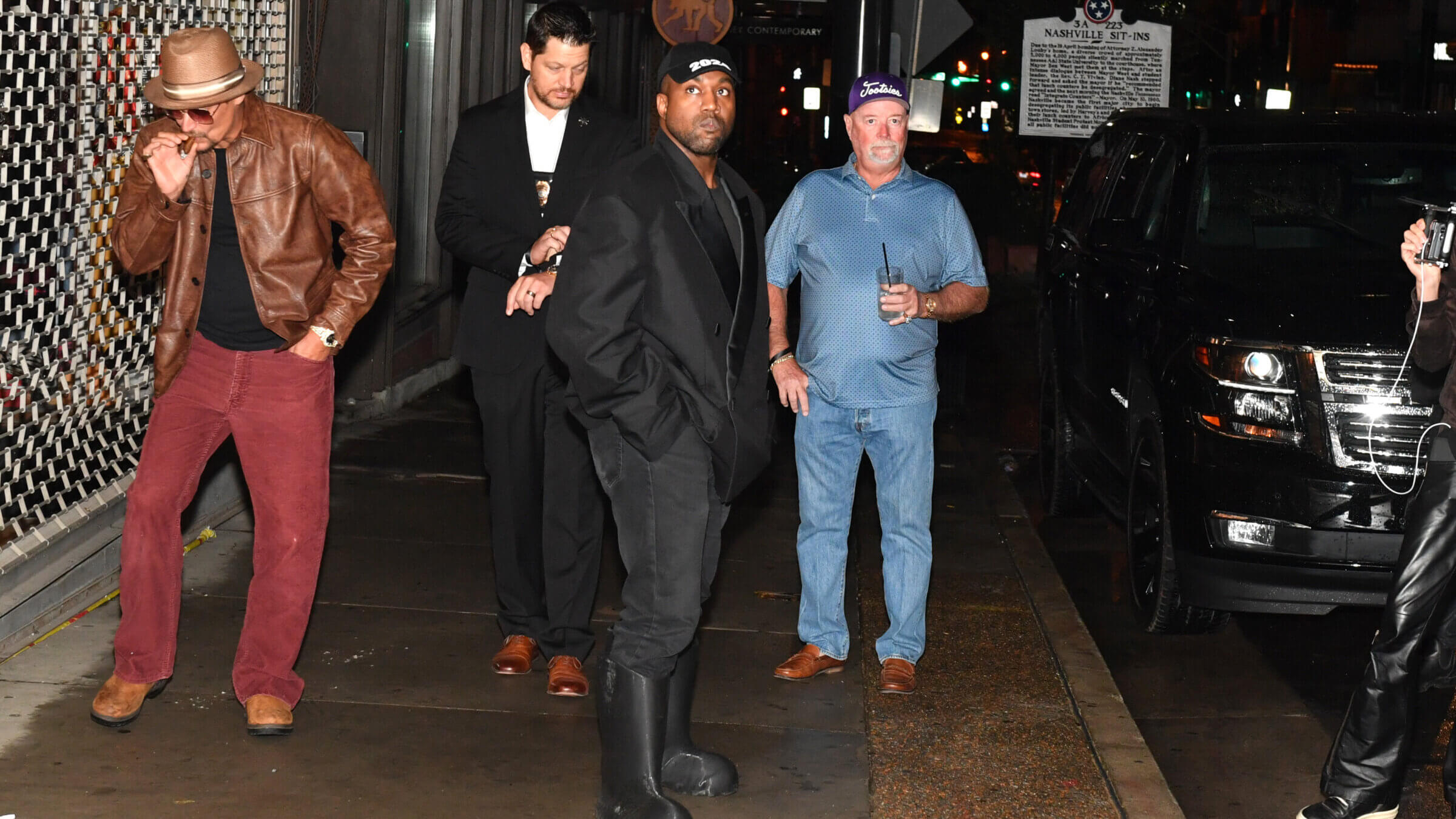Nazi aesthetics sold Kanye West on everything else about Hitler
If you watch the Infowars interview, West was mostly praising the looks and sounds of Hitler’s Germany

Kanye West, in one of his more understated pairs of large black boots. Photo by Jason Davis/Getty Images for DailyWire+
Well before Kanye West publicly praised Hitler (though long after he allegedly did it in private), he was seen out on the town in what looked like a cartoon version of Nazi jackboots.
Ye purports to be an aesthete. He launched a fashion line that included insanely expensive plain white T-shirts and shoes that look like something out of a David Cronenberg film. On an episode of My Next Guest Needs No Introduction with David Letterman, we got a look inside his all-white, minimalist home (in a widely circulated 2019 video, his ex-wife, Kim Kardashian, showed off its basin-less sinks).
So it’s really no surprise that, if you listen to his Thursday appearance on Alex Jones’ Infowars, the things West was praising Hitler for were, for the most part, aesthetic.
“He had a really cool outfit and stuff, and he was a really good architect,” West, who legally changed his name to Ye, told Jones.
“So you’re in love with the look of it?” Jones asked.
Ye didn’t answer directly. Instead, and somehow this is being glossed over, he replied, “And he didn’t kill 6 million Jews, that’s just, like, factually incorrect.” But it’s pretty clear that, at least as a starting point, the “look” may have been what got him hooked.
A huge part of the Nazi program was killing with looks. Hugo Boss manufactured the SS uniforms. Hitler wasn’t an architect, but one of his closest confidants, Albert Speer, was, and was essential in designing the rallies and grand stadiums that inspired fascist fervor in the German people. Hitler, too, was concerned with appearances, approving an official art style and labeling others degenerate. (He also had a hand in designing the Volkswagen Beetle.)
Much has been made of West’s erroneous declaration that Hitler invented highways and “invented the very microphone that I use as a musician.”
The last comment isn’t entirely off the mark. The microphone Ye, and many other recording artists, use in the booth is likely the Neumann U87, a descendant of the Neumann CMV3, which became known as the “Hitler Bottle,” for the man who helped make it famous.
In the 2020 documentary The Meaning of Hitler, microphone expert Klaus Heyne explained how the CMV3, a microphone that allowed for a greater range of movement from a speaker, was used to great effect by the Führer.
“All of a sudden Hitler was able to be more evocative, more animated in his delivery because he wasn’t shackled by the technology,” Heyne says in the film. This allowed for wild gesticulations and shifts in volume and tone. The effect of wall-to-wall sound and crescendo, Heyne wagered, was “just the same as when the Beatles performed at Shea Stadium.”
A musician, especially one with a desire to speak to the masses, might find something attractive in this idea.
When Ye says “I like Hitler,” he probably means he finds the newsreels of the Nazi leader addressing the Sportpalast appealing on some level. He may like the spectacle of the “Cathedral of Light” at the rally grounds, the way Speer made Hitler the focal point — if not the Godhead.
If you look at West’s Sunday Services, he bathes the room in red, magenta or blue light for worship, nominally of God, but, truthfully, of himself and his cult of personality.
Adidas, which West partnered with, was founded by members of the Nazi party, and the company broke ties with him over his antisemitic tweets. Hugo Boss, Volkswagen, Mercedes and Coco Chanel (a Gallic collaborator) all managed to remain relevant without saying nice things about Hitler, even though he was once their patron. When the dust settled, they knew how to divorce their aesthetics from an ideology.
But West proves that, even 77 years after the collapse of the would-be Thousand-Year Reich, the look and feel of fascism can sell you on its ugly ideas.
A message from our CEO & publisher Rachel Fishman Feddersen
I hope you appreciated this article. Before you go, I’d like to ask you to please support the Forward’s award-winning, nonprofit journalism during this critical time.
We’ve set a goal to raise $260,000 by December 31. That’s an ambitious goal, but one that will give us the resources we need to invest in the high quality news, opinion, analysis and cultural coverage that isn’t available anywhere else.
If you feel inspired to make an impact, now is the time to give something back. Join us as a member at your most generous level.
— Rachel Fishman Feddersen, Publisher and CEO